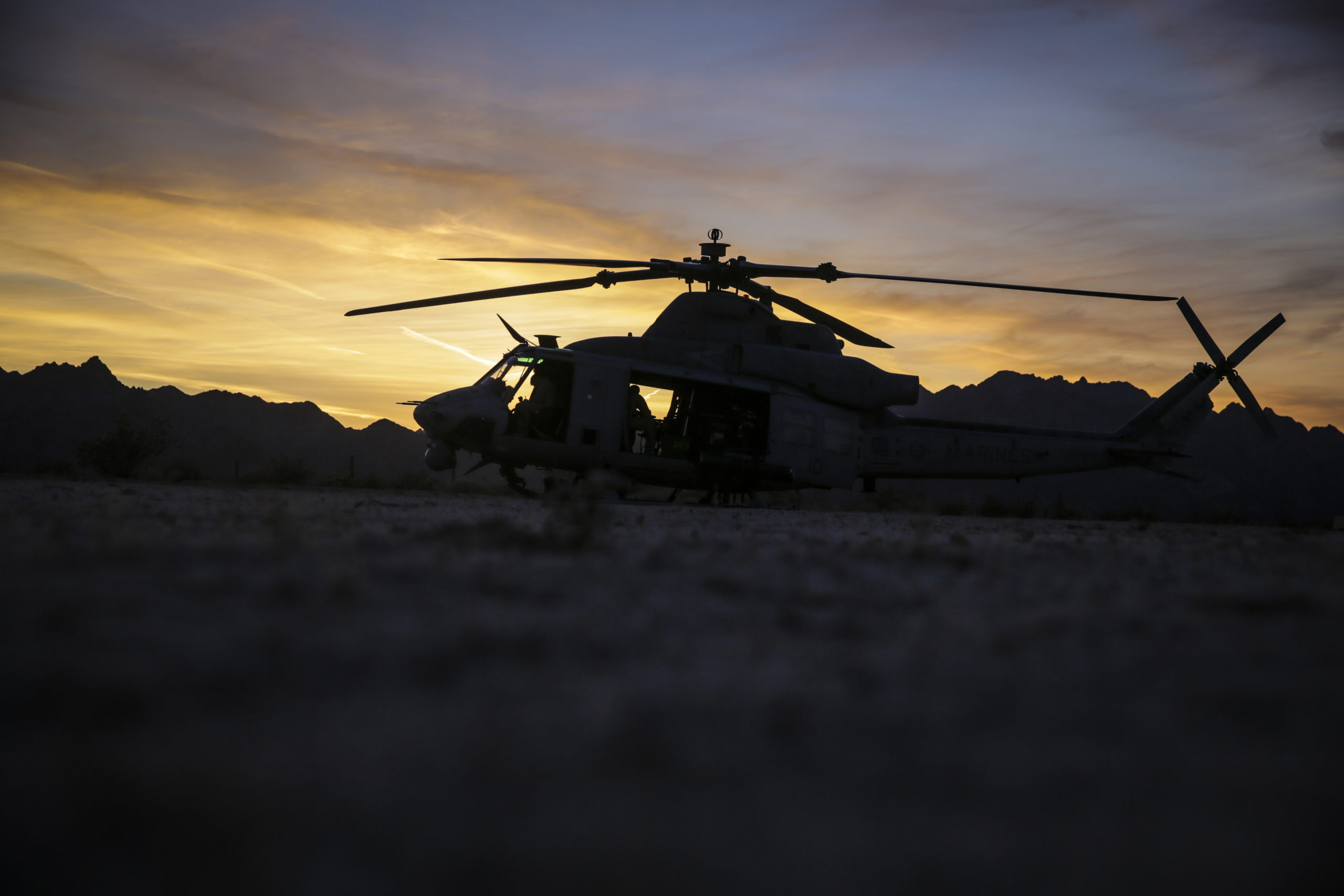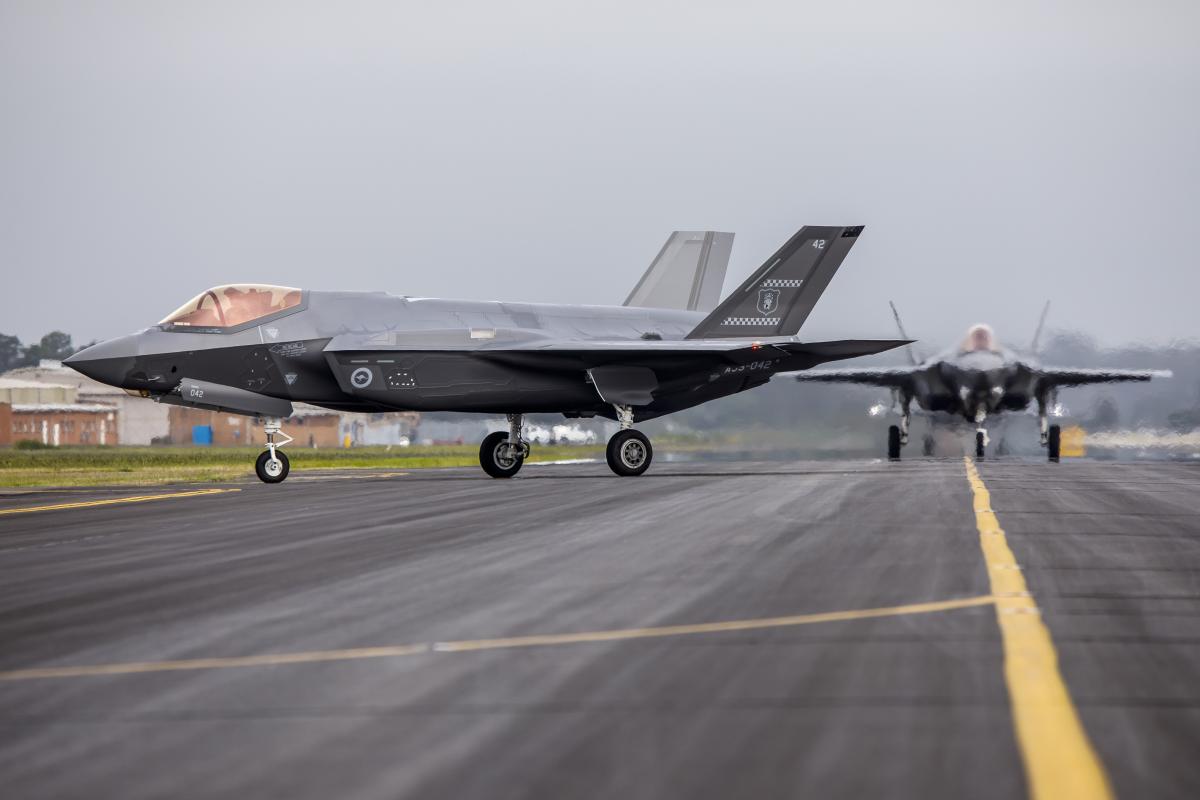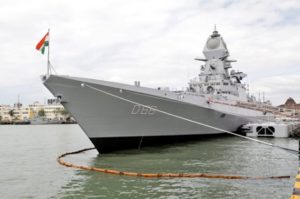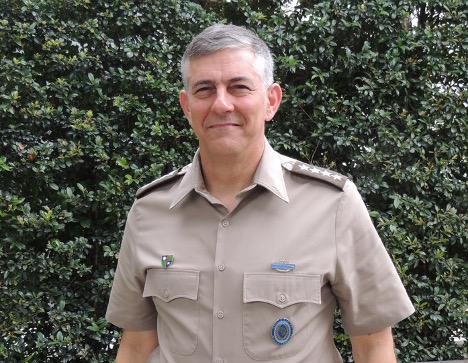By Robbin Laird
The Marine Forces Special Operations Command provides an interesting case study for the USMC transformation path. It was stood up in 2006 and was clearly part of the response to the land wars and to enable the Marines to work more effectively within the key role which Special Operations Forces were playing in how the land war was being fought.[1]
With the land wars over (although counter-terrorism operations sadly not) should MARSOC be abolished? Some have argued this. But as the Marine Corps is reworking how to operate force distribution and integration, why isn’t the small unit operational capabilities of the Raider teams not a key element of the next phase of transformation?
The idea behind the Inside Force is to find ways that smaller clusters of Marines can deploy within a Weapons Engagement Zone, and connect with an Outside Force, either to empower that Outside Force or to deliver decisive effect in a special area of operations.
Also, a key element of the peer fight is to understand how to deal with a core challenge posed by our peer competitors, namely, being able to counter their focus on operating at a level of lethality below outright war but using military and other means to coerce outcomes in their favor.
It would seem that MARSOC forces could contribute significantly to working at this level of warfare, and with focus on ways to connect more effectively indigenous or partner groups with the Outside Force, whether Marines, or the joint or coalition forces, the work which MARSOC has done with joint and coalition forces in the past would seem as well to be a key asset to leverage going forward.[2]
MARSOC while preparing for a peer fight could also provide a significant real world force element for innovation at the small group level, which can be leveraged and introduced into the wider Marine Corps force. They also could assist in rethinking how to use the assets the Marines already have to enhance combat capability now rather than waiting for whatever innovations arrive and are credible the decade out.
Given the importance of small group operations distributed but integratable with a larger force, the Marine Raiders should be a key part of this next phase of transformation. In effect, the Marines need to take full advantage of MARSOC opportunities and to leverage their potential contributions to shape change going forward.
I had a chance to discuss in November 2021 the challenges and opportunities for shaping the way ahead for MARSOC within the overall transformation of the USMC and its role in the Joint Force with Major General James F. Glynn, the CG of MARSOC. Major General Glynn assumed command of Marine Forces Special Operations Command (MARSOC) in June 2020. His previous assignment was the Commanding General of Marine Corps Recruit Depot Parris Island and Eastern Recruiting Region. A native of Albany, New York, his service as a Marine began in 1989 after graduating from the U.S. Naval Academy with a Bachelor of Science Degree in Mechanical Engineering.
His initial assignment was with 3rd Battalion, 3rd Marine Regiment, in Hawaii where he served as a rifle platoon commander throughout Operations Desert Shield/Desert Storm and later as the Mortar Platoon Commander. He has served in a variety of command and staff billets at: Marine Barracks 8th & I, Washington, DC; 1st Battalion, 4th Marine Regiment, Camp Pendleton, California; Marine Corps Recruiting Station, San Antonio, Texas; I Marine Expeditionary Force, 2nd Battalion, 4th Marine Regiment, Camp Pendleton, California, and Marine Corps Forces Special Operations Command’s (MARSOC) Special Operations School, Camp Lejeune, NC.
More recently, MajGen Glynn served as the Deputy Commanding General of Special Operations Joint Task Force, Operation Inherent Resolve (Forward).
Previously, he served at Headquarters Marine Corps (HQMC)—first as the Military Assistant to the Assistant Commandant of the Marine Corps, and then as the Director of the Office of U.S. Marine Corps Communication.
We started by discussing the nature of the change being focused upon at MARSOC. As MajGen Glynn put it: “From the outset of the standing up of MARSOC, we focused on a concept often referred to as I-3: Interoperability, Integration, and Interdependence. And I believe, based on competitors and what their study of our Joint Force capabilities are, the time is now to focus very purposefully on interdependence as a core element going forward.”
“How are we going to be ready for the future? A stand in force approach means that we need to be very deliberate about the development of our capabilities going forward, with a thought towards the interdependencies of what special operations forces are expected to do in support of, and as part of, such a force.”
“By virtue of Title 10, services tend toward the responsibility to engage in crisis response as a core function, and certainly the Marine Corps is crucial to such a mission. The Navy performs some actions in competition, such as freedom of navigation, and all the services focus on reassuring partners and allies. But SOF in general, and MARSOC in particular, focuses on activities that begin before crisis. We are part of the overall engagement in pre-crisis actions and do so by operating and developing relationships with partners and allies to enable them to do their own crisis prevention and response and enable them to tamp down violent extremist organizations that can turn into insurgencies. What we do on behalf of the naval services is provide access and placement to friends, partners and allies in shaping relevant capability in that pre-crisis to crisis phase.”
We then discussed the advantages which flow from smaller group operations to drive innovation in the larger force. I argued that one of the advantages of having small groups like MARSOC is you can be more cutting edge because you’re smaller, and you have less large force consensus building to try something new. And in my view, the Marines have capabilities from the aviation side, right now, Ospreys, F-35s, Vipers/Yankees, and CH-53Ks which can be tapped in new ways to shape innovation going forward while other innovations are shaped in the decade ahead, which in my view will be shaped by actual modular task forces in operations and combat.
MajGen Glynn provided his perspective on this aspect of driving change as follows: “Our size is our strength. We have the agility to make a decision, take one step and pivot 90 degrees to enable that decision. We’ve demonstrated that in a number of areas. That’s obviously considerably more cumbersome to larger formations.”
“What that enables SOCOM, and the Marine Corps is an outsized return on investment for a relatively miniscule investment in time, money and equipment. We can leverage the SOCOM acquisitions mindset of buy, try, decide; in other words, get one, try it. If it’s not good, then don’t use it. If it just needs to be modified, make some modifications, and try it again. And if it’s worthy of investment, then on behalf of the service we can turn it into a program of record and a larger scale investment.”
“We are focused on strategic shaping and reconnaissance with a specific emphasis in the electromagnetic spectrum and information environment. Our ability to bring multi domain awareness and effects to the pre-crisis and crisis phases to, for example, the MARFORPAC commander in his role with the Joint Force Maritime Component Commander, is a key focus for us.”
“Returning to my point with regard to interdependencies, I look at MARSOC operations as part of a Venn diagram, or the image of the Olympic rings. If the capabilities of the service and the SOF component are thought of as rings, how purposeful can we be about where, how, and why they overlap? What are those capabilities that intersect and represent purposeful interdependencies? The Marine Corps prides itself on mission analysis and task organizing for the mission. We have that opportunity on a larger scale right now, and MARSOC, as the Service SOF component, is optimized to be the vanguard of experimenting with interdependencies required for stand-in forces.”
The focus on MARSOC as an Inside Force or Stand in Force, as the Marines call it, does highlight the interdependency nature of their operations. What do they bring to an area of operation? What do they link to enhance their own impact, and to enhance the other elements of the force which operates in or comes to an area of interest? Working innovations in interdependencies to shape effective pre-crisis and crisis responses is a core driver of change for the evolving MARSOC force.
This is how MajGen Glynn put it: “Our name, Marine Raiders, highlights an innovative tradition dating back to 1942. Our company commanders in this organization are Majors and each unit has the capability to engage in multi-domain operations. Throughout these initial 15 years, MARSOC units have significant experience in expeditionary operations, sets and reps as expeditionary advanced operators and that experience is crucial in shaping the way ahead as we work with new approaches and new technologies. At the same time, we have joint and coalition experience, and working with partners and allies is a key part of our operational DNA.
“For the naval forces, our approach to basing and logistics is a key driver of change as well. We are agnostic to where we operate from, but it is influenced by aspects of support like logistics. As long as we get what we need to operate, we are not concerned with how it arrives. If it is by a CH-53, or an unmanned USV, it’s that the logistics capability contributes to enabling where we are. We operate from ships, ashore, can be air dropped, however, we will stay where necessary for the time needed, and a noteworthy aspect of it is about logistical enablement for what can be done in the area of interest.”
“From this perspective, we are clearly interested in adopting new technologies. We can operationally test, evaluate, and take equipment and techniques to a remote location where we’re training or deployed and learn from it. With that experience, we’ve said, “Hey, we’re going to need to fix that thing, but the other thing works. From there, we’ve been able to influence the pace of investment and adoption. I think this approach can become very impactful to the way ahead for the coming Marine Littoral Regiments.”
“Our ability to leverage what we already have, but to do so in new ways, is crucial to innovation with today’s force, as we develop tomorrow’s force. Our ability to operate with the Viper, with the 53K, with the F-35 now, we definitely have an opportunity and are working towards realizing enhanced combat effects from such interdependencies.”
We then concluded by discussing the changing nature of warfare, and how MARSOC can enable the force to enhance its ability to prevail within that changing warfare calculus. In my view, the 21st century authoritarian powers who are peer competitors operate in the warfare spectrum from the use of lethal force designed to achieve tactical or strategic objectives below the threshold of triggering a wider conventional conflict up to the level of nuclear force informed conventional operations.
MARSOC from this perspective is a clear player in frankly both ends of the spectrum, but certainly is a meat and potatoes player in deploying to counter the lethal force supporting the political objectives of what people like to call “hybrid warfare” or operating in the “gray zone.” And with its focus on shaping the kind of relevant interdependencies with other force elements, which can play from either partner or coalition or joint forces, can learn how to be an effective tip of the spear, but even more importantly help shape what indeed the most relevant spear would be in such situations. From this perspective MARSOC is not a force focused on irregular warfare, but on regular warfare 21st century peer competitor style.
MajGen Glynn noted that from such a perspective one could consider MARSOC as focused on optimizing for the 21st century version of regular warfare. “We’re leveraging capabilities in order to bring cross domain awareness of peer adversary actions and activities that are going on right now.”
He argued that bringing their combat experience to the evolving warfare context is a key advantage for the MARSOC force. “The reality of our deployments around the world is that our force is getting very relevant warfighting sets and reps. They know what it’s like to be in a denied environment, at least for a period of time, they know what it’s like to be in a contested environment for extended periods of time. That they’re adapting and adopting both the technology, the techniques, and the manner in which they do business on an evolving basis to operate in such environments.
“We take lessons from our deployed forces now and apply them into the process that we have to certify, validate and verify every formation that we send in support of Special Operations Command. We run a validation process flexible enough to adapt to emergent requirements to make sure we stay relevant and remain current, because that’s our assessment of how quickly things are changing, particularly below the threshold of declared armed conflict.”
[1] Sgt. Jesula Jeanlouis, “Marine Forces Special Operations Command Celebrates 15th Anniversary,” (February 22, 2021), https://www.dvidshub.net/news/389559/marine-forces-special-operations-command-celebrates-15th-anniversary.
[2] An interesting look at some of these dynamics is an article by Paul Baily, “Enabling Strategic Success; How MARSOC can help overcome ‘simple minded’ militarism,” Small Wars Journal (January 11, 2021), https://smallwarsjournal.com/jrnl/art/enabling-strategic-success-how-marsoc-can-help-overcome-simple-minded-militarism.
Featured Photo: A U.S. Marine Corps UH-1Y Venom is staged during a Marine Corps Forces Special Operations Command night raid exercise at Tactical Air Combat Training System Airfield, near Yuma, April 21, 2016. This exercise was conducted during Weapons and Tactics Instructor (WTI) course 2-16. Photo by Lance Cpl. Zachary Ford. Marine Aviation Weapons and Tactics Squadron-1












